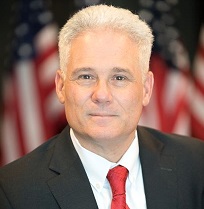Let’s Reaffirm our Commitment to Economic and Environmental Justice Through Energy Integration Across Eastern Europe and Eurasia
Regional energy integration across Eastern Europe and Eurasia is reaching a level of maturity that promises economic and environmental benefits, but only if we sustain our US commitment and investment there.
Speaking recently to members of the Clean Energy Ministerial’s Regional and Global Energy Interconnection Initiative—a collection of global utilities, policy makers, regulators and industry stakeholders seeking to improve cross-border interconnection and accelerate deployment of clean energy technologies—leaders from USAID and USEA explained the long term benefits of integrating Southeast Europe and the Black Sea region within themselves and with the European Union broadly.
Integration in this region is necessary to ensure energy security. Specifically, USAID, USEA and other partners are working to help countries in the region achieve their shared vision for energy security by: establishing competitive and transparent energy markets; facilitating infrastructure investment to diversify energy supplies; improving reliability and security of networks; increasing trade; and protecting critical infrastructure against emergencies such as natural disasters and cyberattacks from malign actors.
In the early years, US-led development assistance work in the region primarily supported the transition from state-owned utilities into privatized utilities. Efforts are now focused on turning over the outdated, inefficient, dirty infrastructure in the region. Obtaining the necessary capital to make those improvements will require free markets of significant size. USAID is working to support energy professionals across the region to create markets, harmonize them, couple them, and have enough transmission backbone to enable free and transparent market trade.
USEA is providing on-the-ground support to allow for network planning (including relevant software and training on how to use it) on a regional and sub-regional basis. Network planning models are then used to determine if the networks are sufficiently robust to support cross-border trade and to assess how much renewable energy can be safely added to the energy grid.
We’re seeing the green shoots of a more mature, secure, regional energy future for Europe and Eurasia. Investors are beginning to return to the region, bringing capital and expertise. This progress is the result of a 30-year USAID commitment there in the post-Cold War era, acknowledging that strength and prosperity across the European region is important to maintaining US security and economic strength. But we cannot allow the pace of this economic and environmental progress to slow. Now is the time to renew our commitment to the region and finish the job we started.
For more information on the Clean Energy Ministerial Regional and Global Energy Interconnection Initiative: http://www.cleanenergyministerial.org/initiative-clean-energy-ministerial/regional-and-global-energy-interconnection-rgei-initiative

